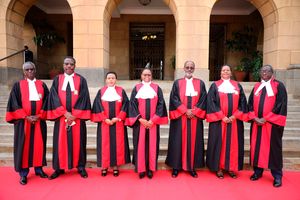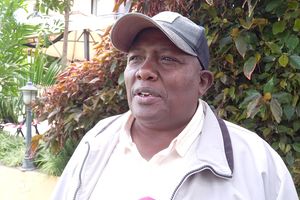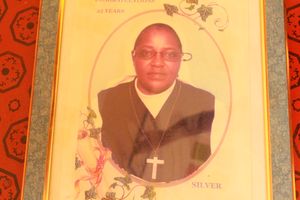Premium
The Ghost at the Railway Museum

A snake at the Railway Museum that spits fire no more.
The sun was out last Sunday morning, but there was still a chill in the air. It was an indoors day. I decided to check out the Railway Museum near the old railway station; I hadn’t been there for years.
As soon as I parked the car, a figure appeared from behind one of the old locomotives and approached me. At first, I thought she must have been a member of some traditional dance troupe. She was tall, slender, and dressed in body-hugging brown skins.
‘I think you are Mister John,’ she said. ‘I have been following you for some time. My ghost friends say you enjoy our company and you like hearing our stories. Do you know who I am?’
‘Because of the way you are dressed – I have seen your statue at the Green Park in Wote – and because you are here, you must be Syokimau.’
‘That’s right,’ she said. ‘But why do you say because I am here?’
‘Well, you are famous because it was you who prophesied the coming of the railway. Sometime back in the ninetieth century, didn’t you say there would be a long snake spitting fire and smoke as it moved from waters to waters?’
‘That’s right again,’ she said. ‘And that’s why I enjoy haunting this place sometimes. But these snakes don’t spit fire anymore – I think they don’t move far these days.’
‘I’m told you also prophesied the coming of white people like me. And you said that we would behave in strange ways and our speech would be nonsensical – like the chirping of birds. But I see you have learnt this nonsensical language!’
‘Well, I can speak some of it. I have picked it up from my ghost friends such as Elspeth Huxley and Joseph Thomson, who you have written about. But I can’t read or write it; mind you, we have no need to do that in our afterlife. But you can tell me what is written on the notices inside this place. Don’t worry, no-one will know I am with you. Only you can see me.’
So, I went with her inside. I was surprised. The Railway Museum has been much extended since I was last there. There are three more rooms: one displaying some fine models of steamboats that plied across Lake Victoria; another showing a motley collection of equipment used on the railways (like Imperial typewriters, wellington boots and even massive nuts and bolts); finally, an embryo exhibition based on the SGR.
The whole place has been smartened up and the staff are involved and informative. The old favourite exhibits are still there in the main room, of course: the priceless collection of photographs and maps, oddities like the inspector’s bicycle adapted to run along the rails, and so much memorabilia of the early days of the ‘Lunatic Line’.
As Sir Charles Eliot, Commissioner of British East Africa, said back in 1903, ‘It is not uncommon for a line to open up a country, but this line literally created a country’. I read out a number of the explanatory labels for Syokimau. She was clearly fascinated about the way her predicted snake had played an important part in Kenya’s history.
But I reminded her that she had been very worried about the influence the coming of the white men would have on her own Kamba people. She had predicted ‘the coming of a generation that will behave in strange ways that will betray the culture and traditions’.
‘That’s very true,’ she said. ‘And when I see the way some young people behave these days, I think I was right to be worried. However, you guys did bring us a few nice things, too. Look, why don’t you take me on that new SGR snake to Mombasa and I will say much more about why I have mixed feelings about the way things were and the way they are now.’
John Fox is Chairman of iDC
Email: [email protected]





